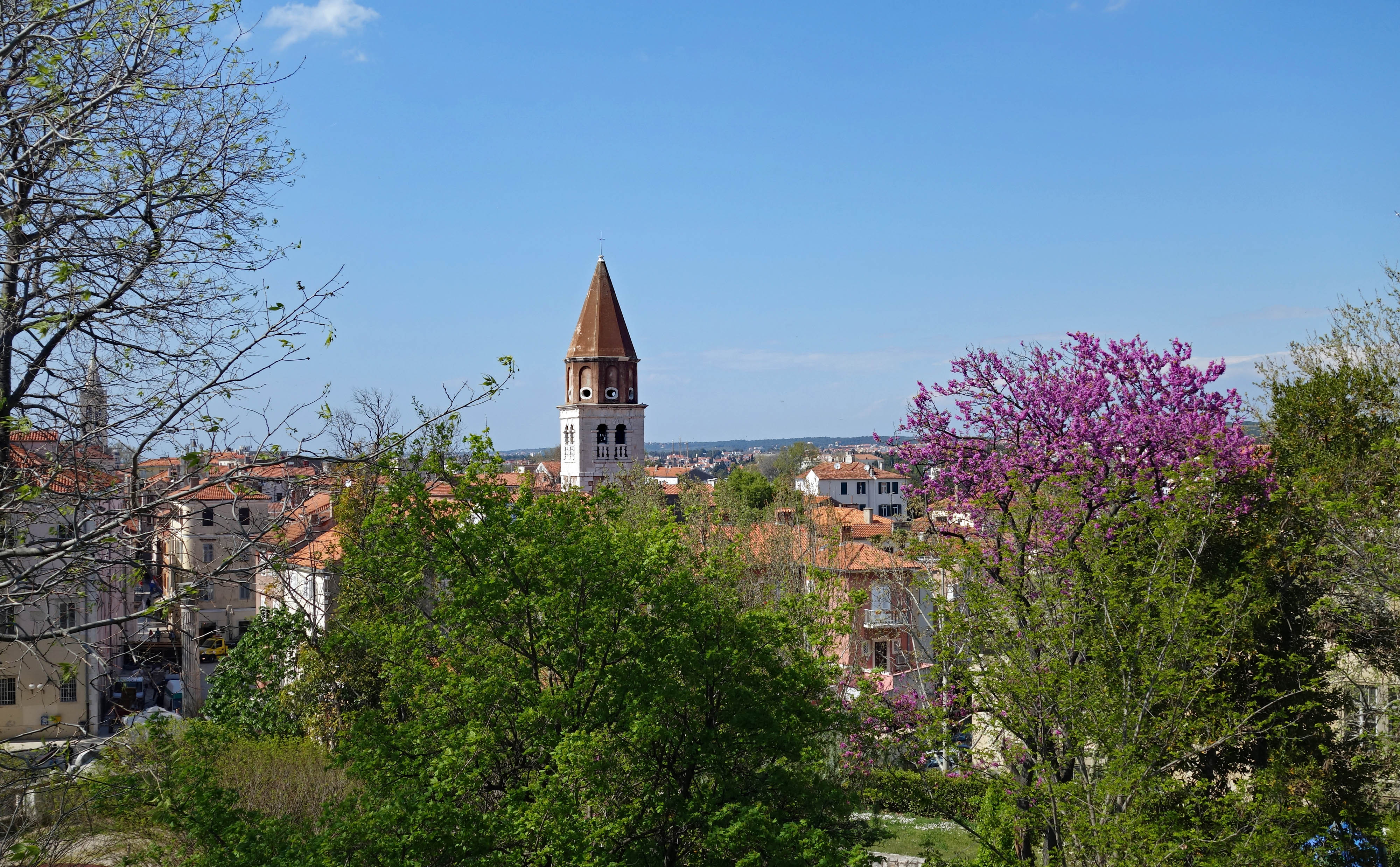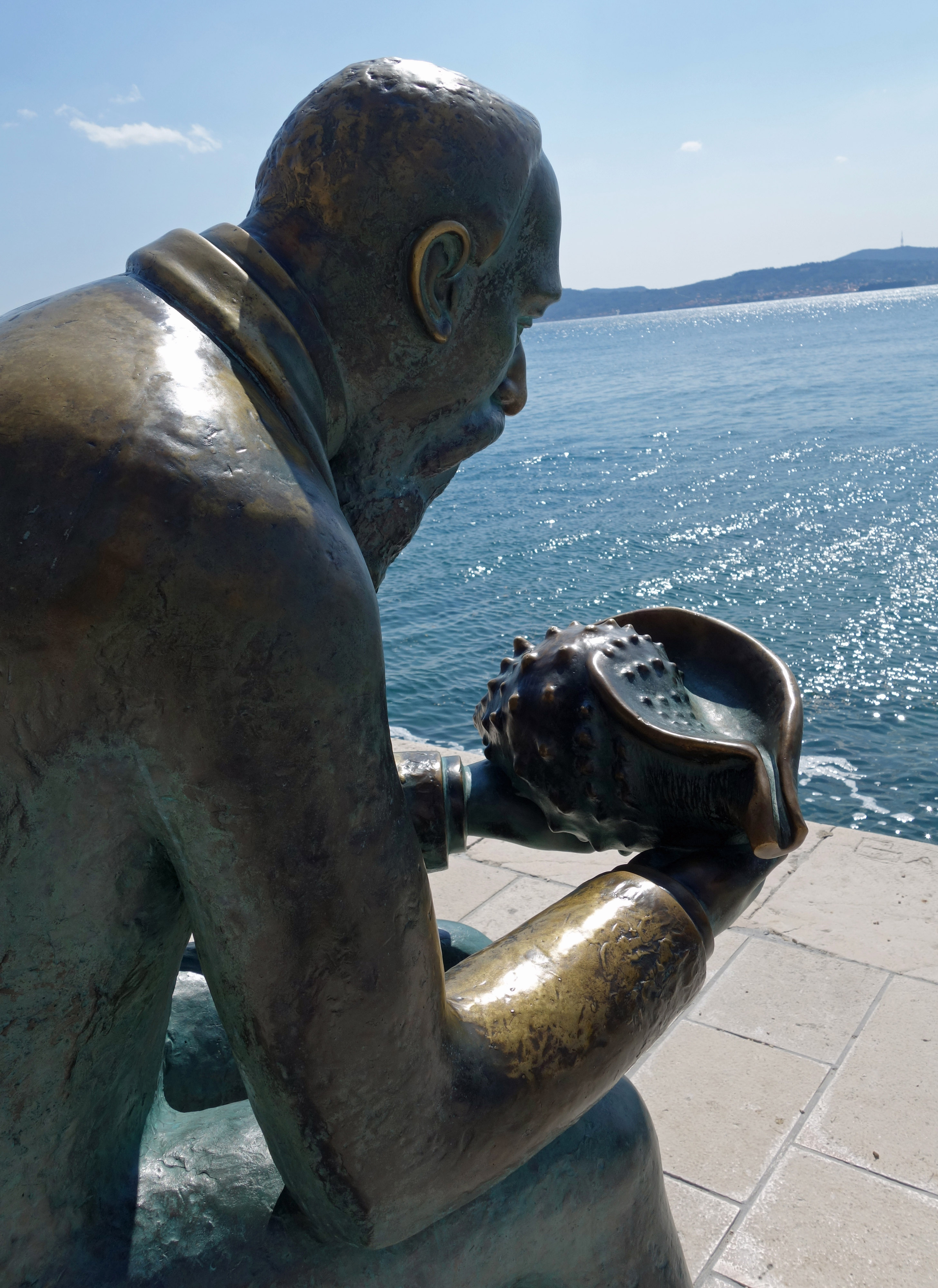
Zadar is one of the oldest cities in Croatia established by the Romans in 59 BC. Like everywhere in Europe it has been ruled, conquered and captured by numerous civilizations over the centuries, each leaving their mark on the city. Old town Zadar is set on a small peninsula jutting out into the sea with narrow, cobbled streets to wander, churches to explore, Roman and Venetian ruins to admire, bell towers to climb and restaurants to enjoy. Zadar is a key transport hub with passenger and car ferries departing regularly to many of the nearby islands as well as Italy.
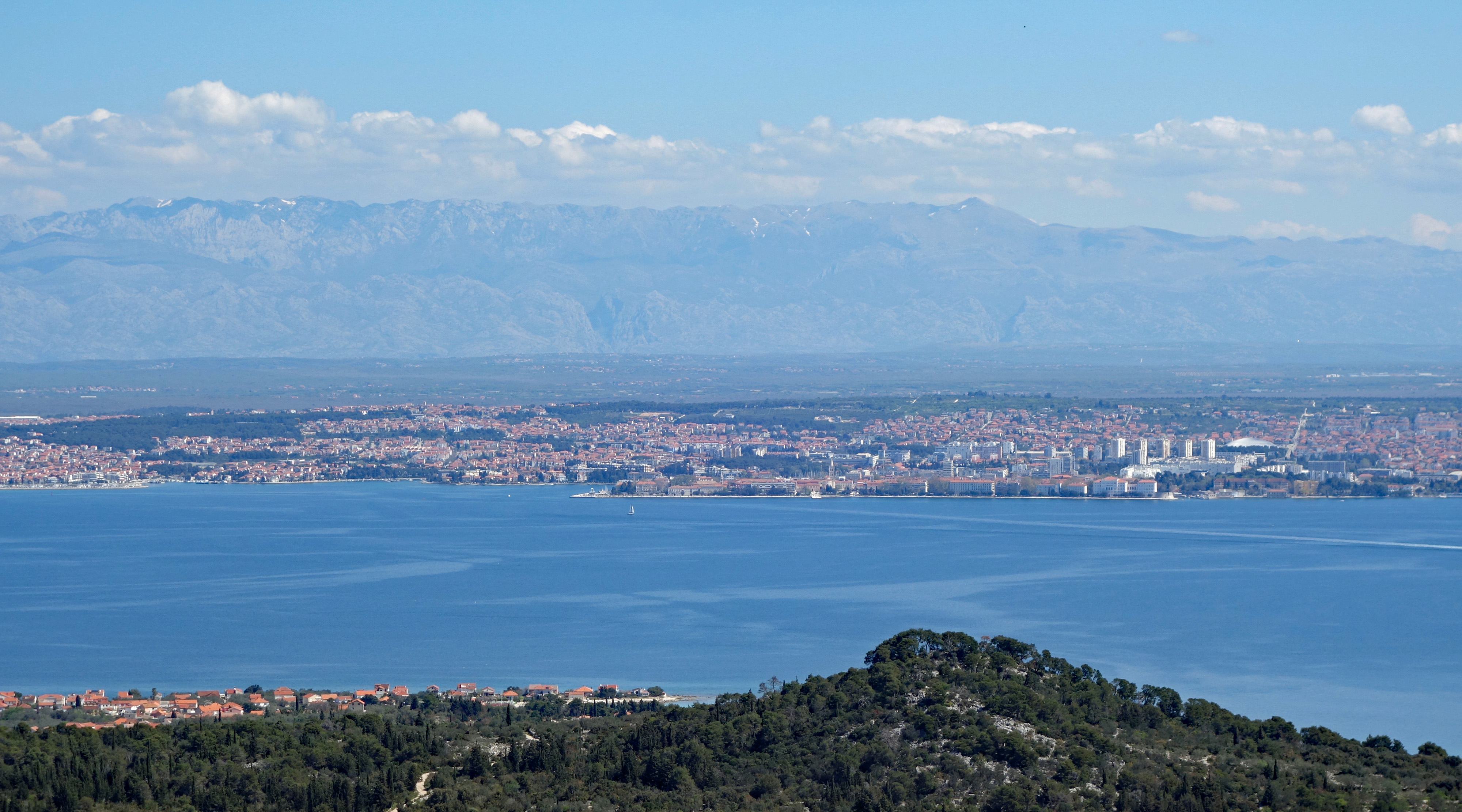
Traveling from Hvar to Zadar involved taking the ridiculously early, and only, catamaran ferry at 6:35 am from Hvar to Split. Arriving in Split we walked to the bus station and took a bus to Zadar, one way tickets costing 63 Kuna (9.70 USD) each . I had reluctantly booked Croatia Bus again and they disappointed again!! The bus was filthy and our scheduled 3 hour journey took 3 hours 35 minutes. The drivers don’t seem to adhere to any schedule 🙁 We had planned on walking to our apartment from the bus station but it was pouring rain in Zadar so we took a taxi to the apartment where we met our latest landlord. The 5 minute taxi ride cost 50 Kuna (7.70 USD), a small price to pay for staying dry 🙂 I don’t mind getting rained on but to arrive with soaking wet luggage is not my idea of fun.
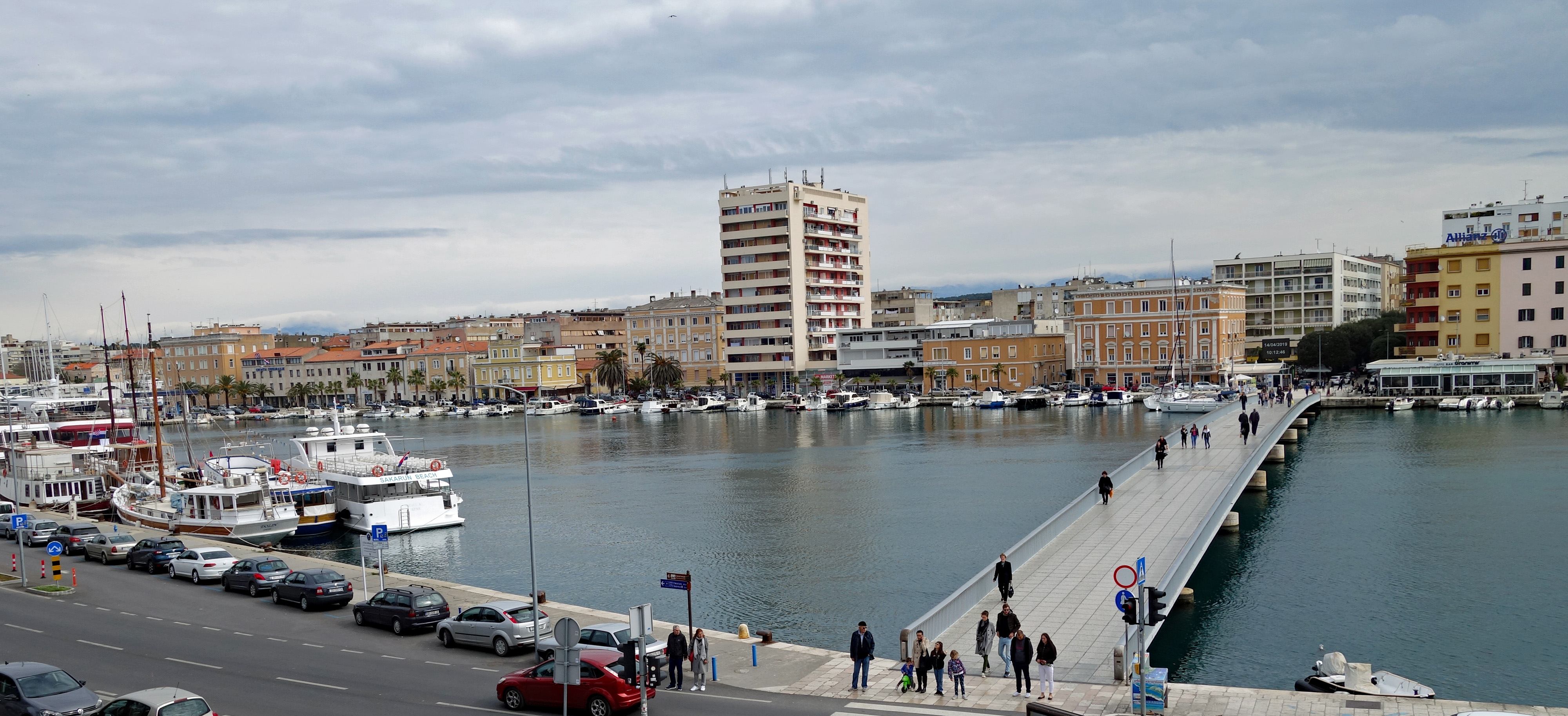
Our apartment is located just across the footbridge from the old town of Zadar. There is a good size supermarket in the main floor of our building so we did not have to go far to stock the kitchen for our 12 day stay here, we later discovered a huge supermarket one block from our new gym, where we found a much larger selection of items. Our first two days were cool and rainy, perfect for visiting our latest fitness club, but on our third day the sun began peeking out and off we headed for a historic walking tour of the old city of Zadar. Our guide, Sime, was informative and funny so our 100 minutes for 100 Kuna tour flew by. There were only four of us on the tour which meant lots of interaction with our guide. Sime took us to a cheese shop where we enjoyed a tasting of local Pag cheese, made exclusively from goats on the island of Pag, it is very tasty. To wind up our tour we sampled Maraska liqueur, the product for which Zadar is most famous. The liqueur is made from the maraschino cherries that grow here. First created by local monks in the 16th century, Maraska was then distilled on a commercial basis and found favour with European royalty.
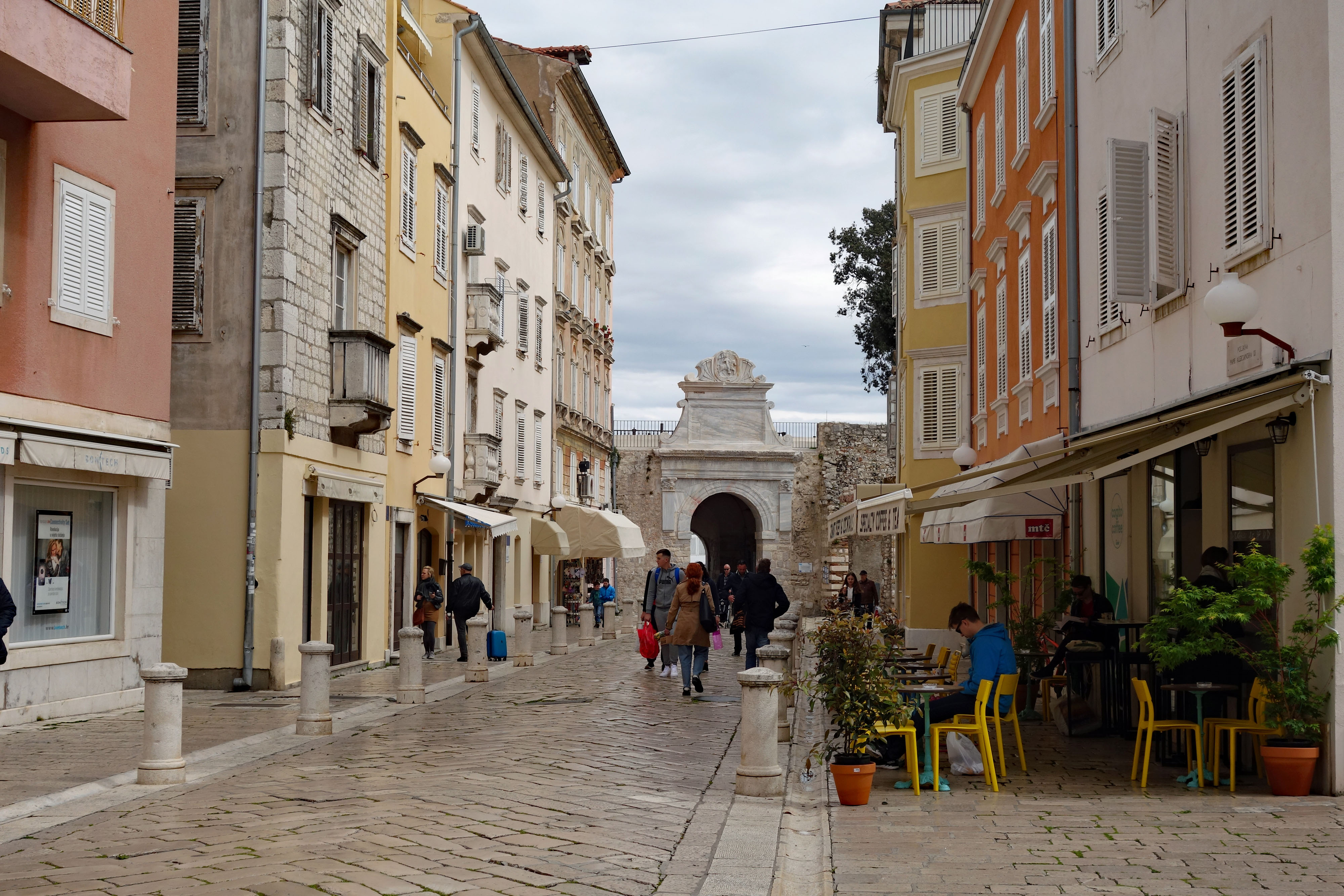
One of the biggest attractions in Zadar is the Sea Organ (Morske Orgulje), on the north-western corner of the Riva, created by artist Nikola Bašić. Deep, melancholy sounds play from the marble steps at the edge of the Adriatic Sea and depending on the rhythm of the waves, you can hear all different sounds throughout the day. The “music” is created by 35 polyethylene pipes of different lengths and sizes embedded with whistles that play seven chords of five tones as the sea pushes air through them. The pipes are built into perforated stone stairs that stretch 70 metres along the coast. It’s a perfect place to sit on the steps above the large musical instrument listening to the noises powered by the strength and pattern of the waves, enjoying views over to neighboring islands.
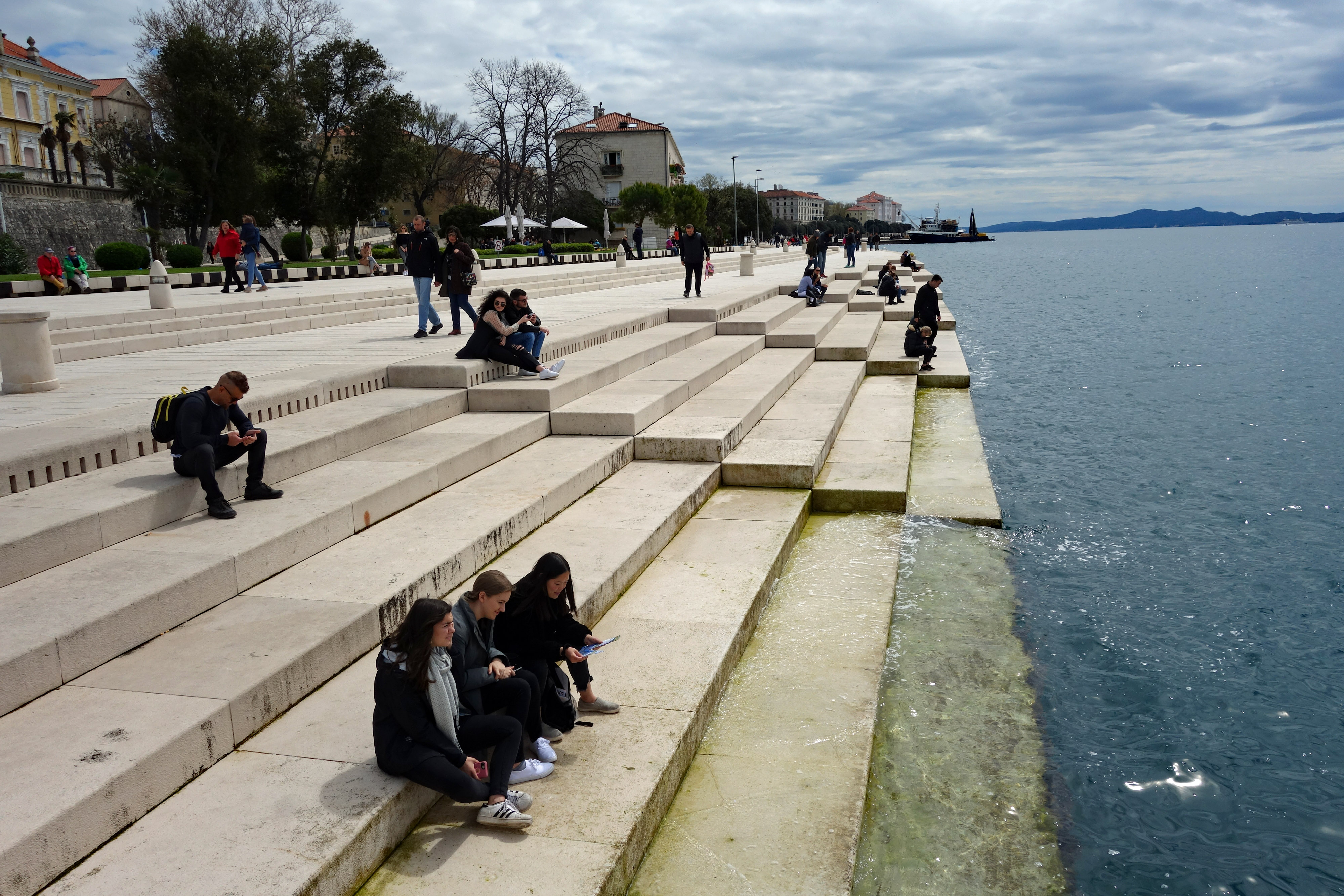
Beside the Sea Organ, and created by the same architect, is the Sun Salutation. This is a 22m diameter circle of 300 solar panels gathering solar energy all day resulting in the flat glass panels coming alive at night with dancing colors. It is a popular site with tourists, and nomads such as ourselves, eager to behold the light show every evening once the sun goes down.
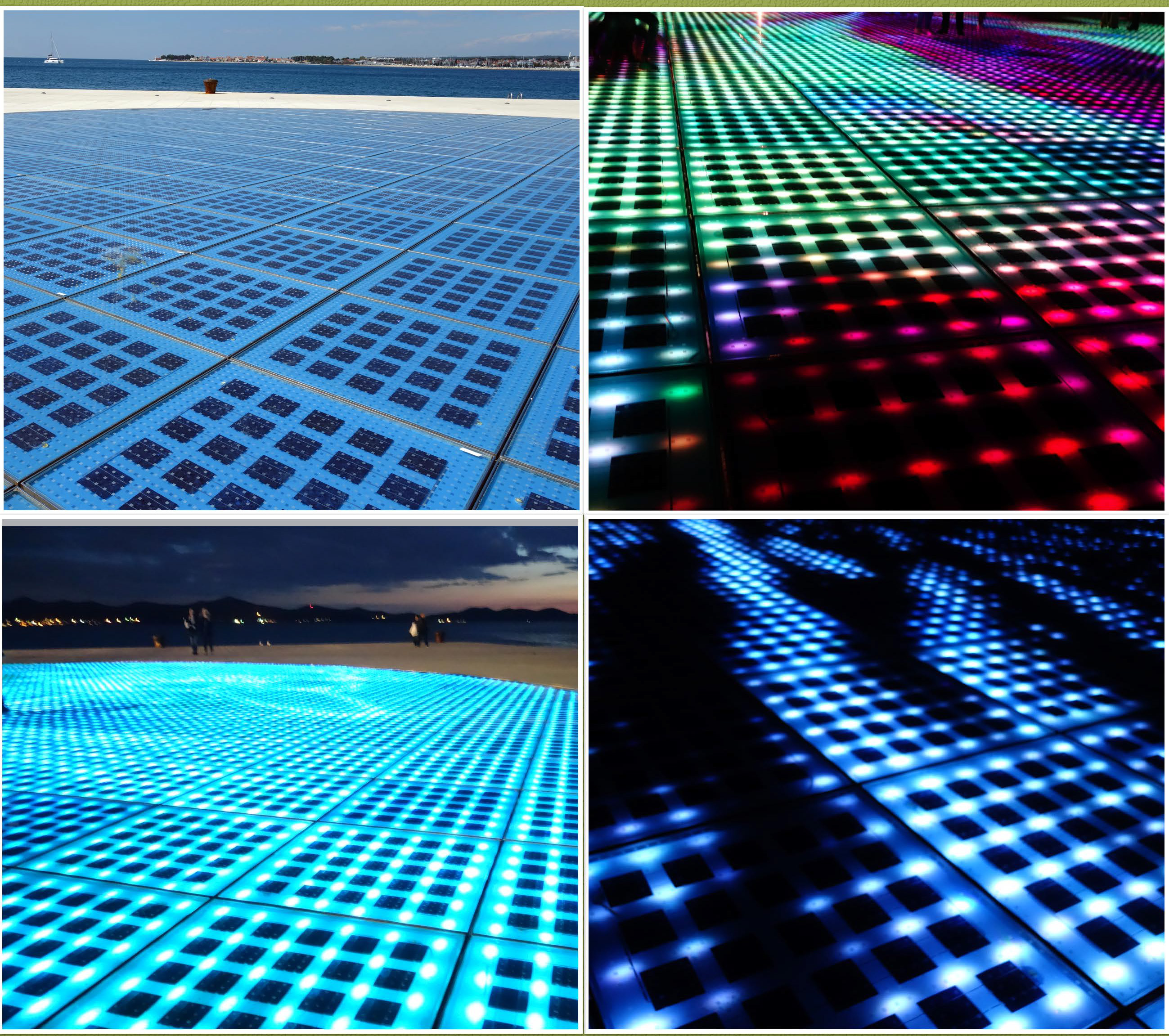
The Zadar Market in old town is a treasure trove of colorful fruit and vegetables. The produce of the surrounding countryside is on offer every morning at this market close to the harbor. Local vendors sell fresh fish, produce, herbs, bakery items and more making it very popular with travelers and locals alike. We made a few trips there specifically picking up some wild asparagus, it is the season!! Right now, many restaurants have a seasonal asparagus menu with a few special dishes on offer, we both enjoyed a delicious lunch of risotto with shrimp and asparagus…yummmmm 🙂
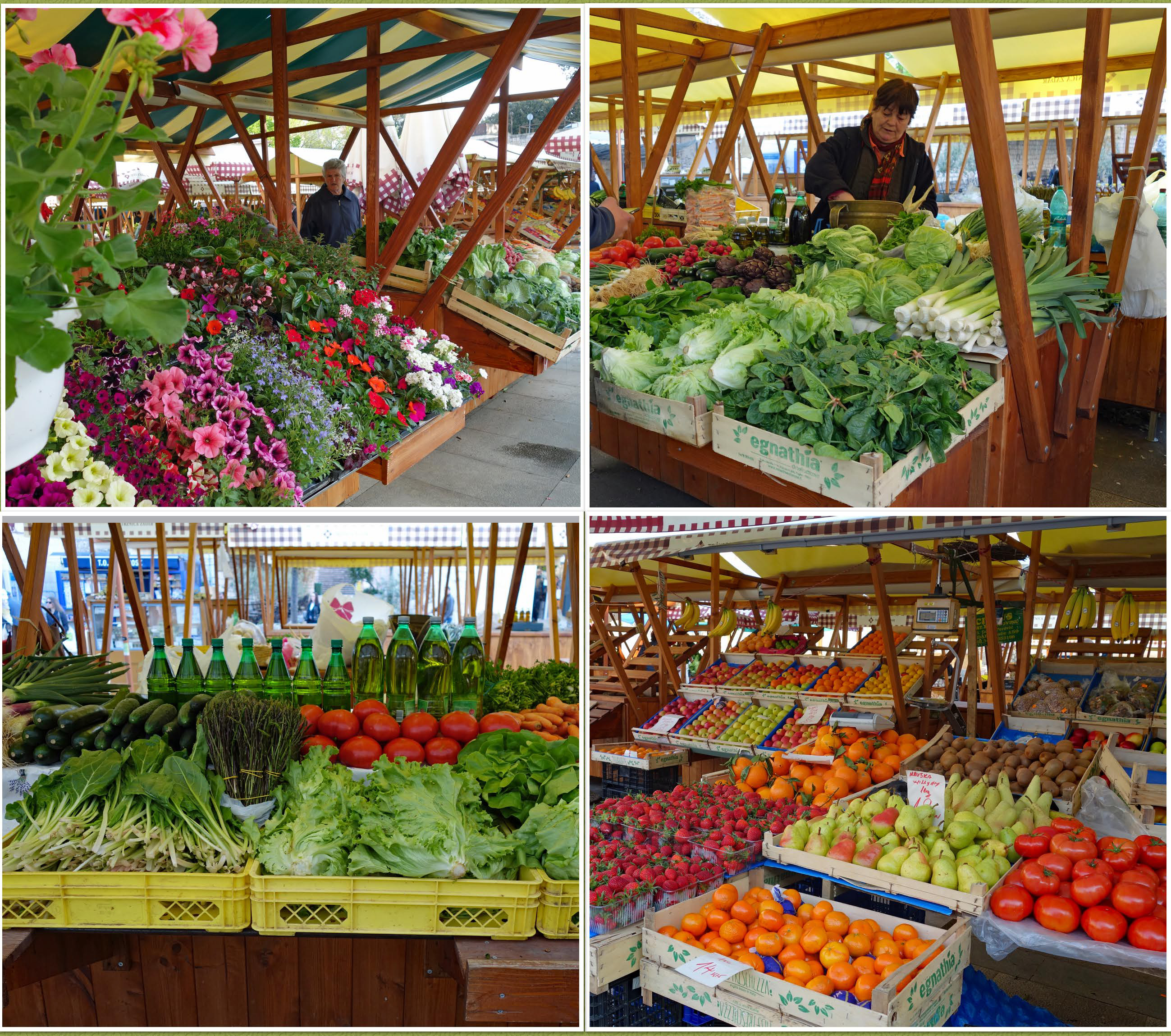
Zadar Cathedral was first built in the 400’s to house the remains of Saint Anastasia after whom it takes its official name. Rebuilt 800 years later, it is now the largest church in Dalmatia.
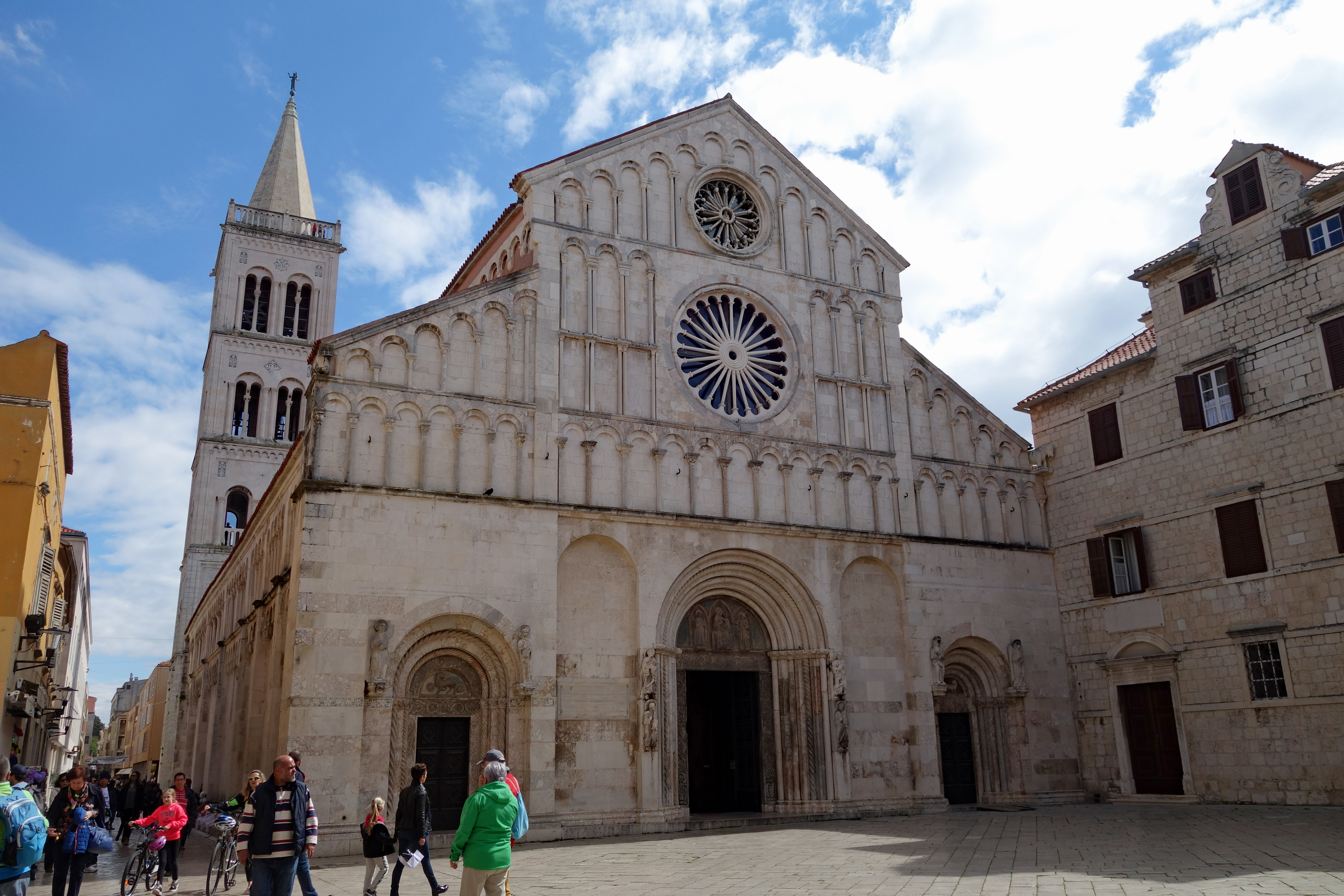
The views from the bell tower, completed by English architect Thomas Graham Jackson in the 1890s, are spectacular and worth the nominal entrance fee of 15 Kuna each (2.30 USD). The spiral staircase is narrow, steep and only one person wide at the beginning. It then turns into a large spiral staircase once inside the open center of the tower, passing the bells on your way to the top. There is a narrow balcony around the top of the tower with stunning views in every direction, from the Adriatic coastline to the west and the mountain range to the east.

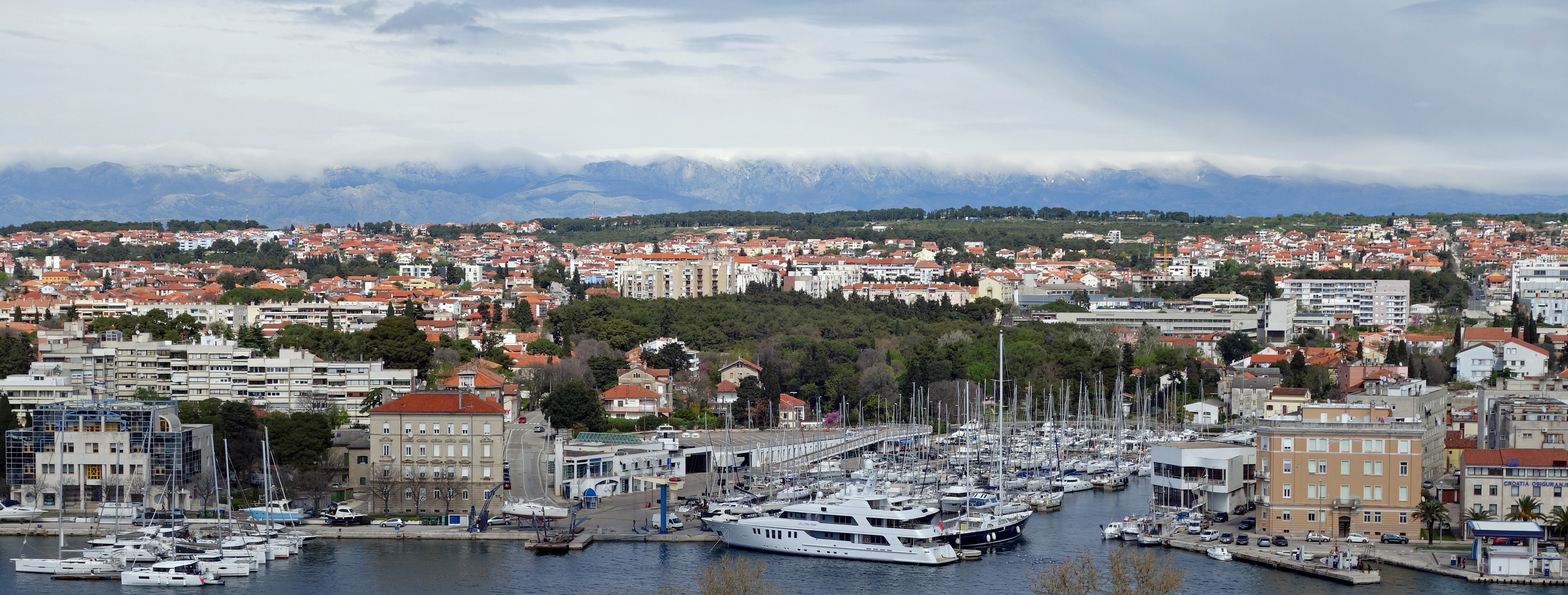
Of the four gates still standing around Zadar’s historic centre, the Land Gate, designed by Venetian architect Michele Sanmicheli in 1543, is the most dramatic. Atop it, the winged lion of Venice greets visitors as they enter the peninsula from the mainland at Foša harbour.
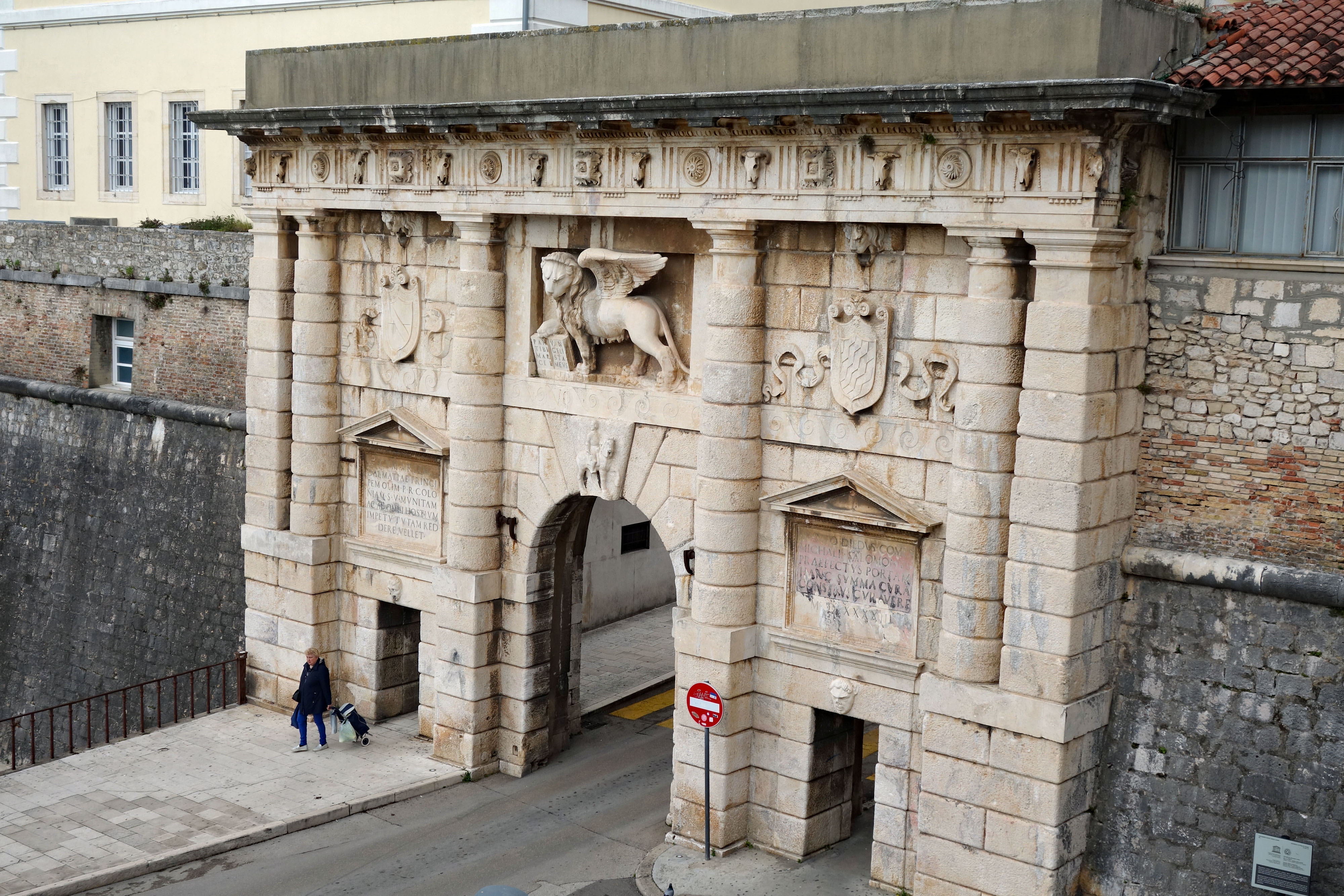
With years of Roman rule under its belt, Zadar has its share of columns that pop up throughout the city where you least expect them. In the heart of Zadar’s historic centre is the Roman Forum, a marketplace built by Augustus 2,000 years ago. Here citizens gathered, traded and worshipped at pagan temples. You can get an inside look at what public life was like in this medieval city and see the ruins of a temple dedicated to Jupiter and the towering Pillar of Shame where wrongdoers were chained and publicly humiliated. The worse the crime, the longer you stayed chained to the pillar, up to a maximum of 72 hours. Visitors can inspect the broken stonework lying about as nothing is kept behind glass or under lock and key.
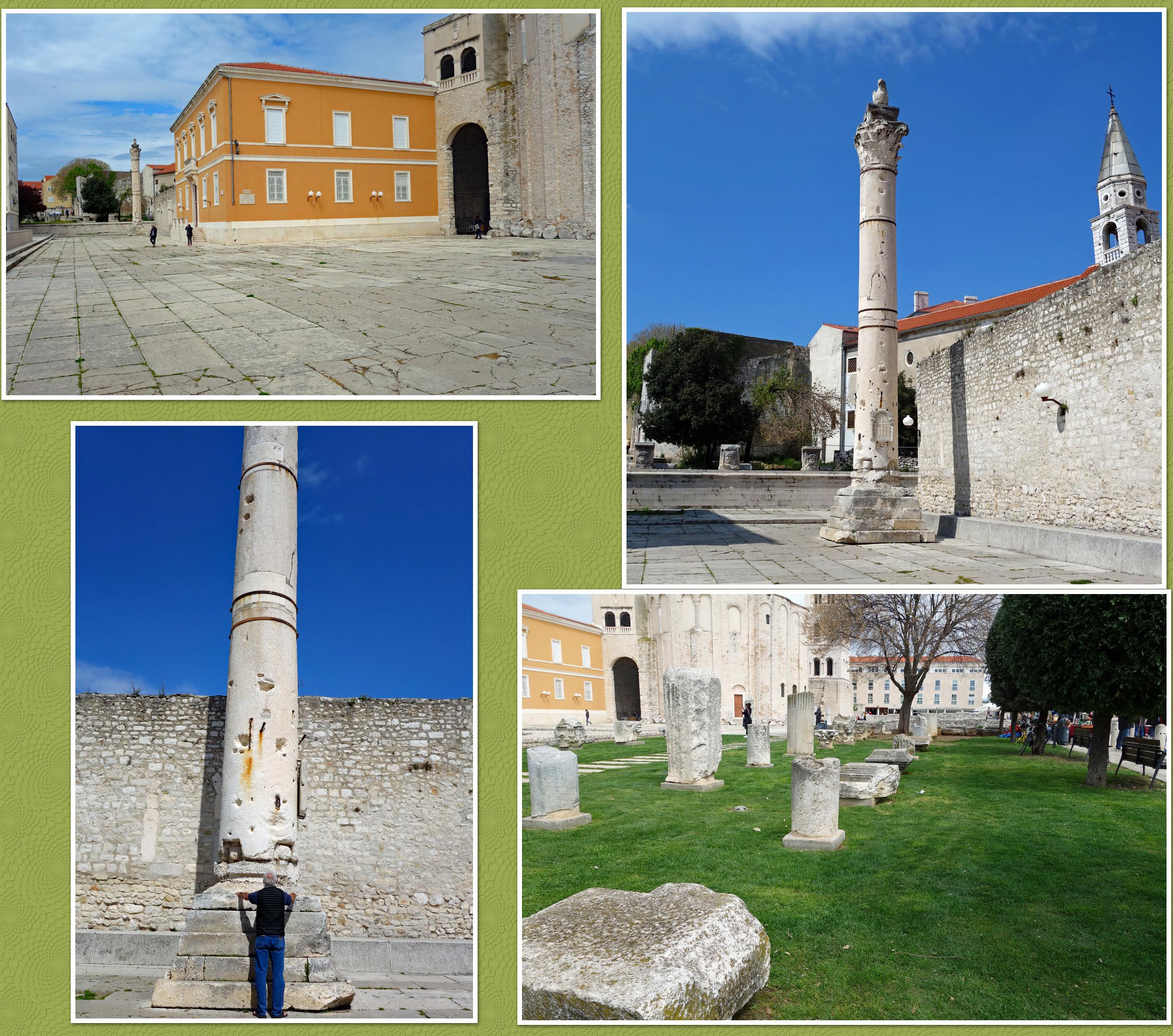
The simple circular-shaped church of St Donat’s is the symbol of Zadar, and sits beside the Roman forum. No longer a place of worship, St Donat’s hosts summer concerts, often of medieval music. Built by the saint of the same name, who brought the remains of St Anastasia from Constantinople to Zadar, St Donat’s was completed in the ninth century.
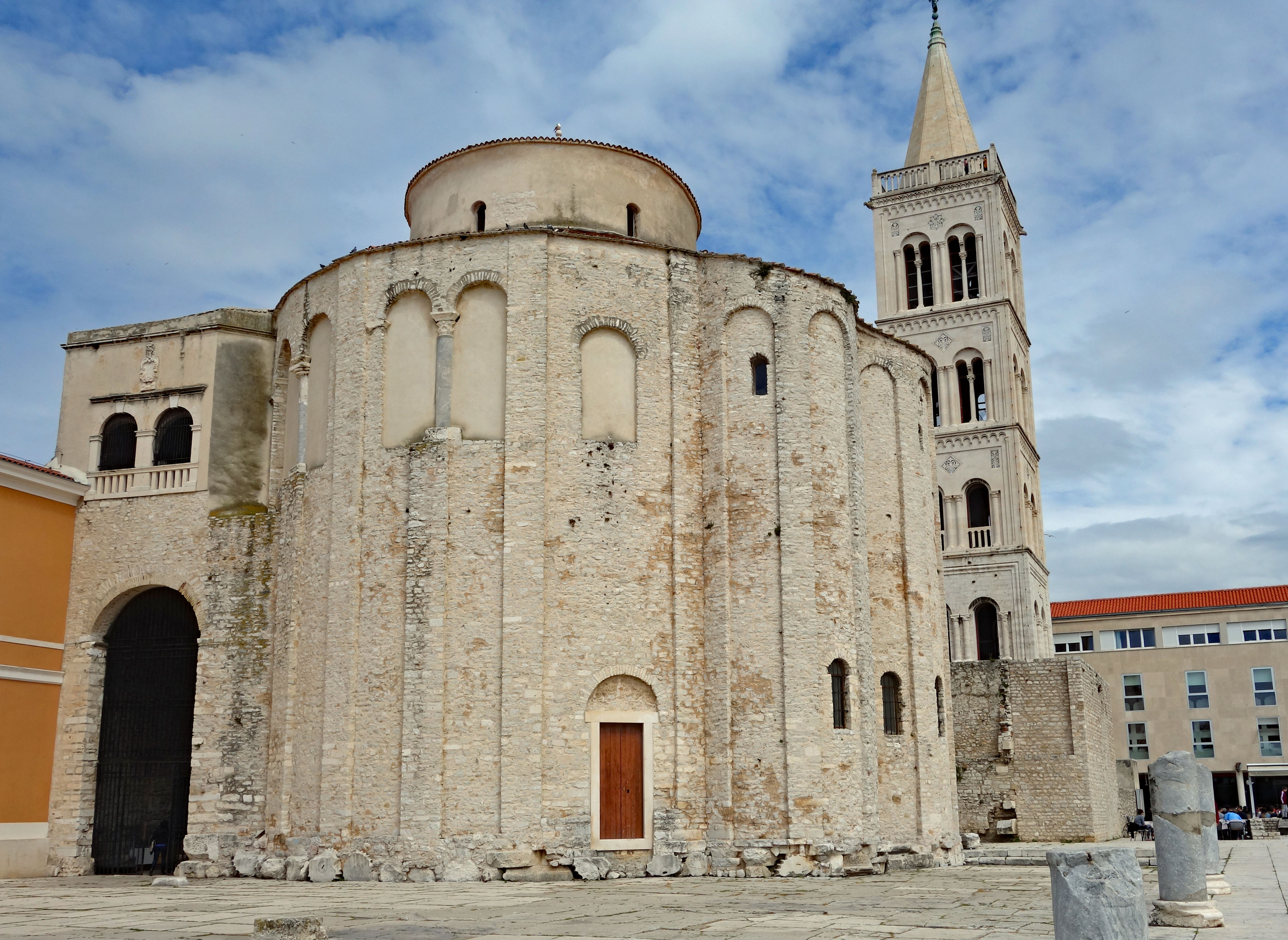
During the 16th century, the Venetians helped the city withstand Turkish sieges by building a large water cistern with five wellheads, giving the square its name – Five Wells Square. While the wells are no longer in use, the square has become a popular place for concerts and events.
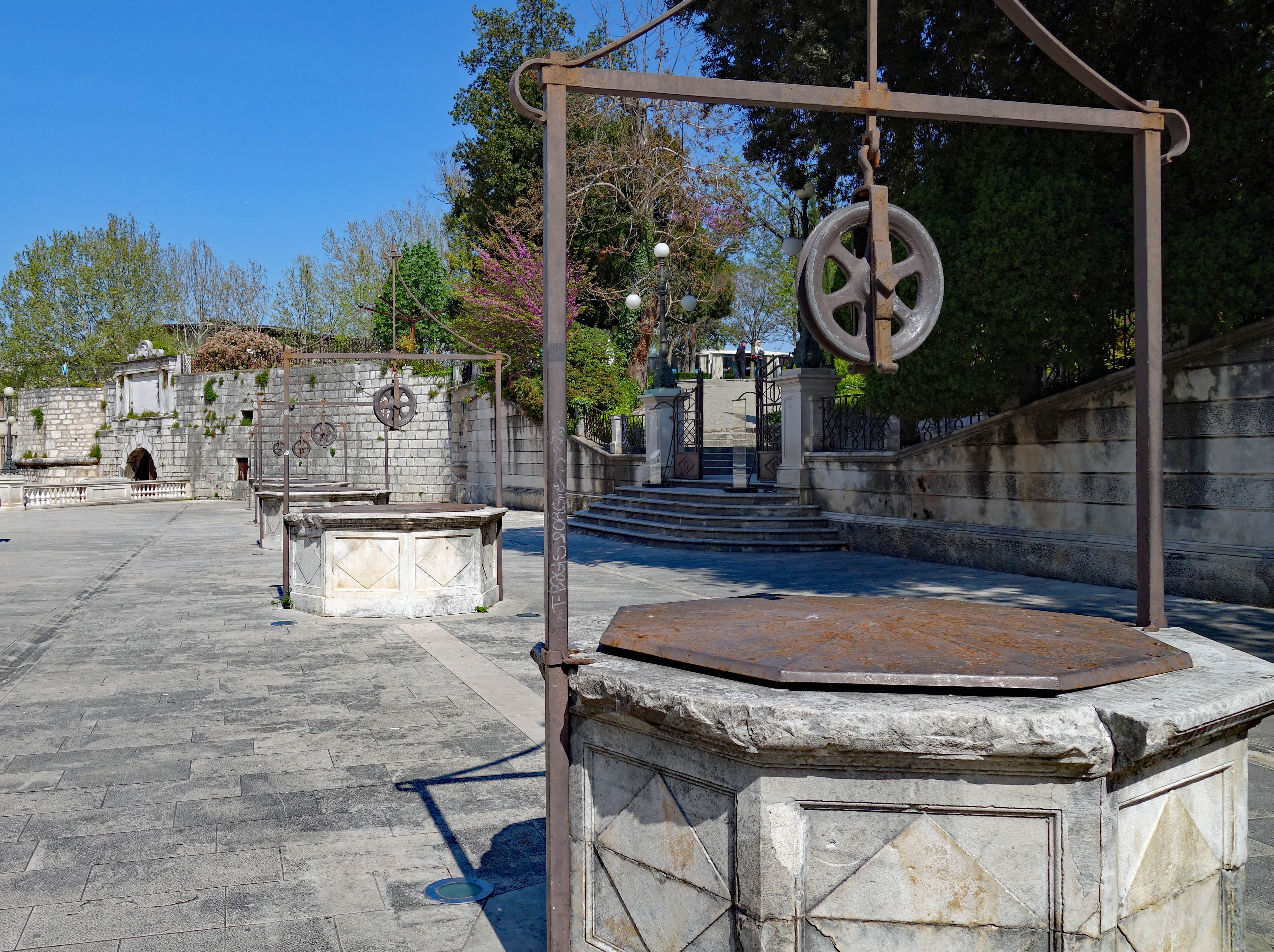
Above Five Wells Square is a small park named after Queen Jelena Madije. Not only is this the city’s oldest park, it was the first public park in Croatia, founded by Austrian commander Baron Franz Ludwig von Welden in 1829. While the hill is not very high it does have some pretty views of the historic centre of Zadar.
In Italian hands for three decades of the last century, Zadar is still in love with gelato and the ice-creams here are said to be the best in Croatia. There are several choice venues around the city center and we made every effort to try as many as possible!
Man of the Sea Statue
The handsome fellow staring at a shell in front of the University of Zadar is Spiro Brusina. Born in 1845, he was an expert in natural sciences and founder of ornithology in Croatia. I wonder what secrets that shell contains?
Zadar’s version of the gondolier, barkajoli are ferrymen who still row passengers between the mainland and the peninsula. The tradition dates back for generations, the same family has been ferrying passengers back and forth for the last 300 years. The short crossing costs 6 Kuna each (1 USD).

A 20 minute ferry ride away from Zadar is the island of Uglijan, and on top of this island is the ruined Saint Michael Fortress. From the Preko ferry port on Uglijan it is a 70 minute hike along a mostly paved road through olive groves, passing undoubtedly centuries-old field walls, and up a steep rocky path to the summit.
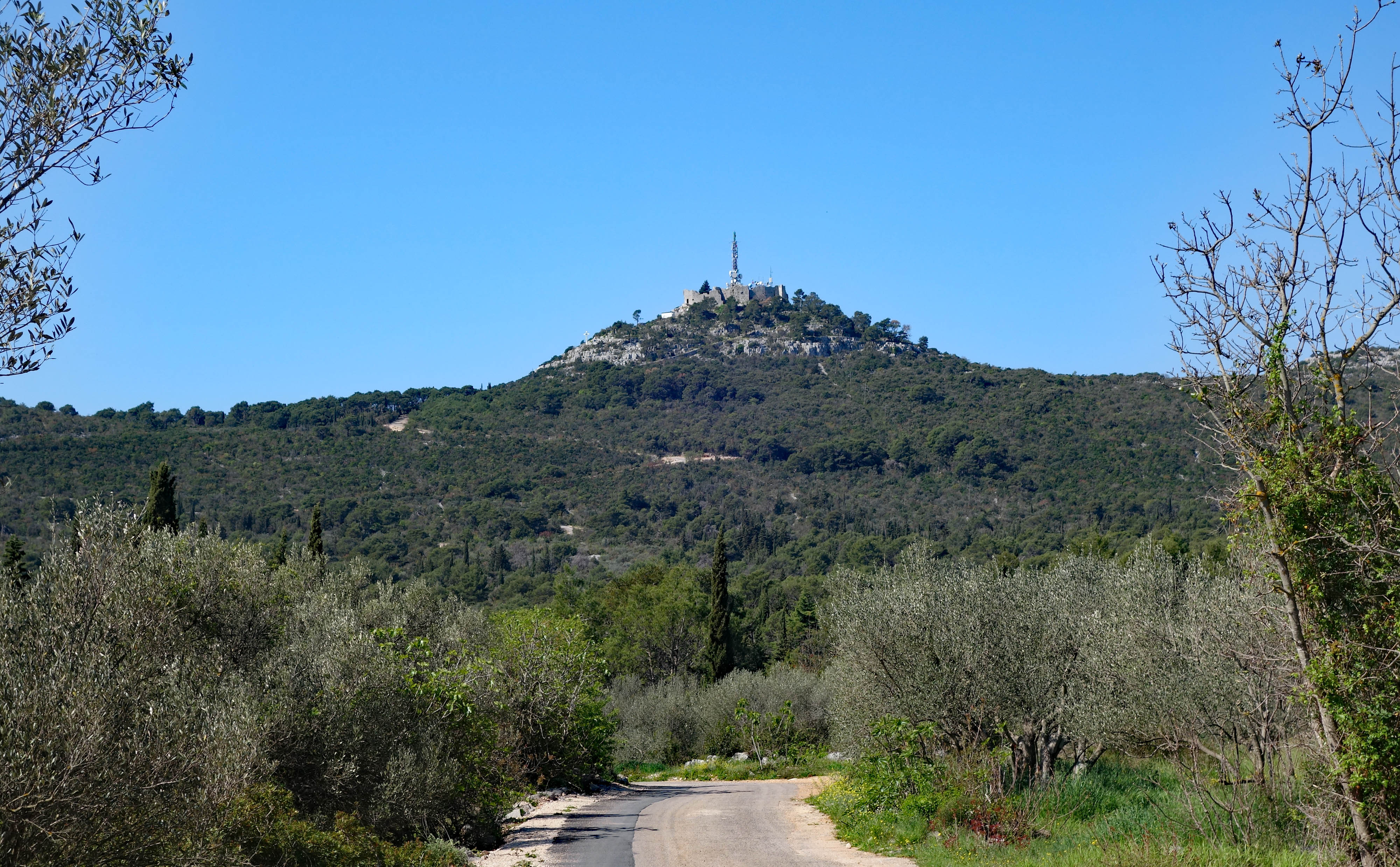
We had a clear day and were rewarded with spectacular views getting better and better the higher we walked.
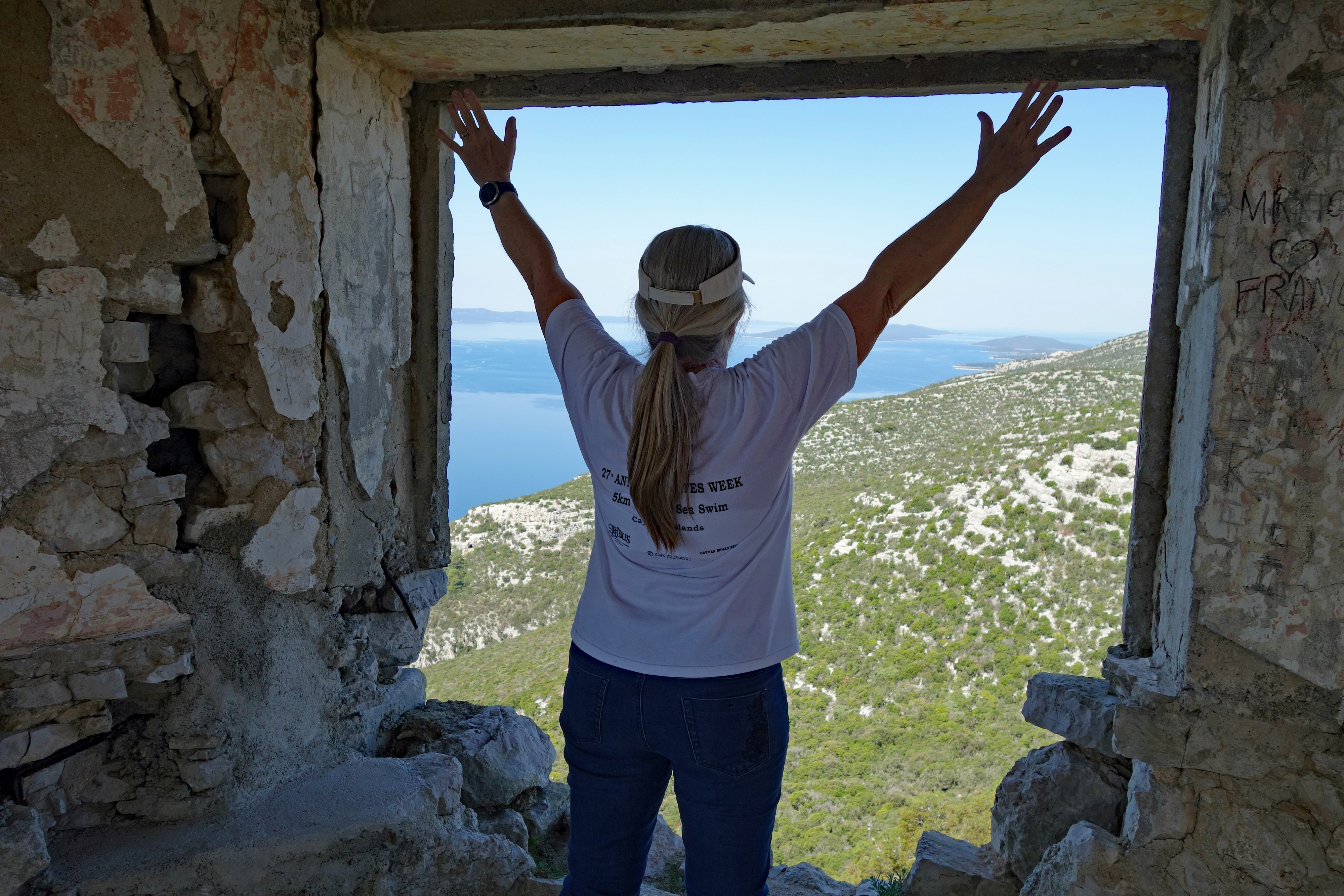
The fortress of Saint Michael dates back to the 6th century, when it most likely served the role of an observation post. With its strategic position at an altitude of 265 meters above sea level, it’s possible that the fort was used by the Byzantine Empire to monitor and control the surrounding sea routes.
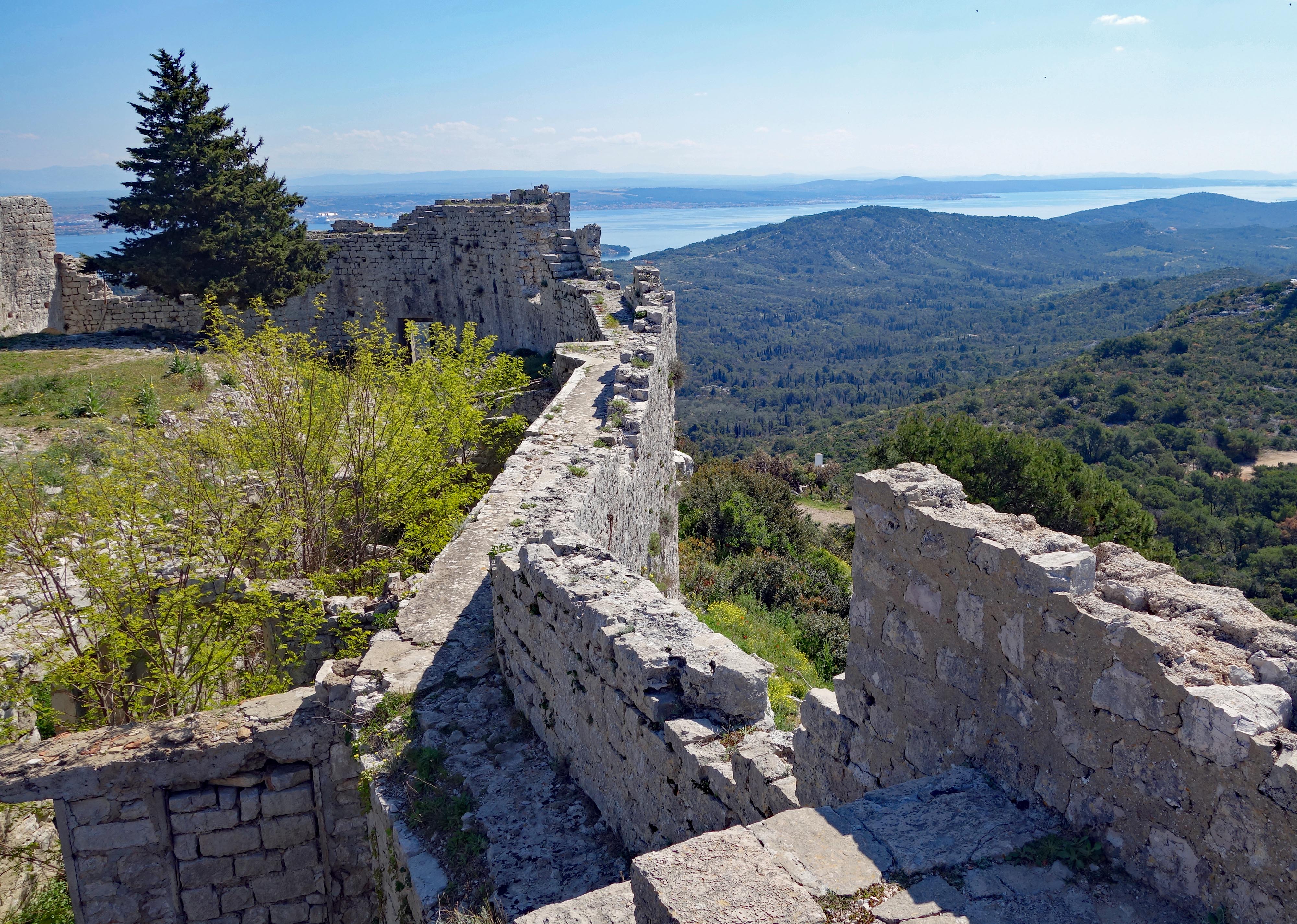
The exact year or time frame in which the fortress was built is still unknown. There is, however, evidence of the Order of Saint Benedict being situated on this hill in the 11th century. The first records of the fortress date back to 1345, when it was besieged and conquered by the Venetians. In 1944 the fortress was still being used as an observation post and on August 29th and September 10th, Saint Michael was bombarded by the South African Air Force. Records of the very moments of the fortress being bombarded can be found here.
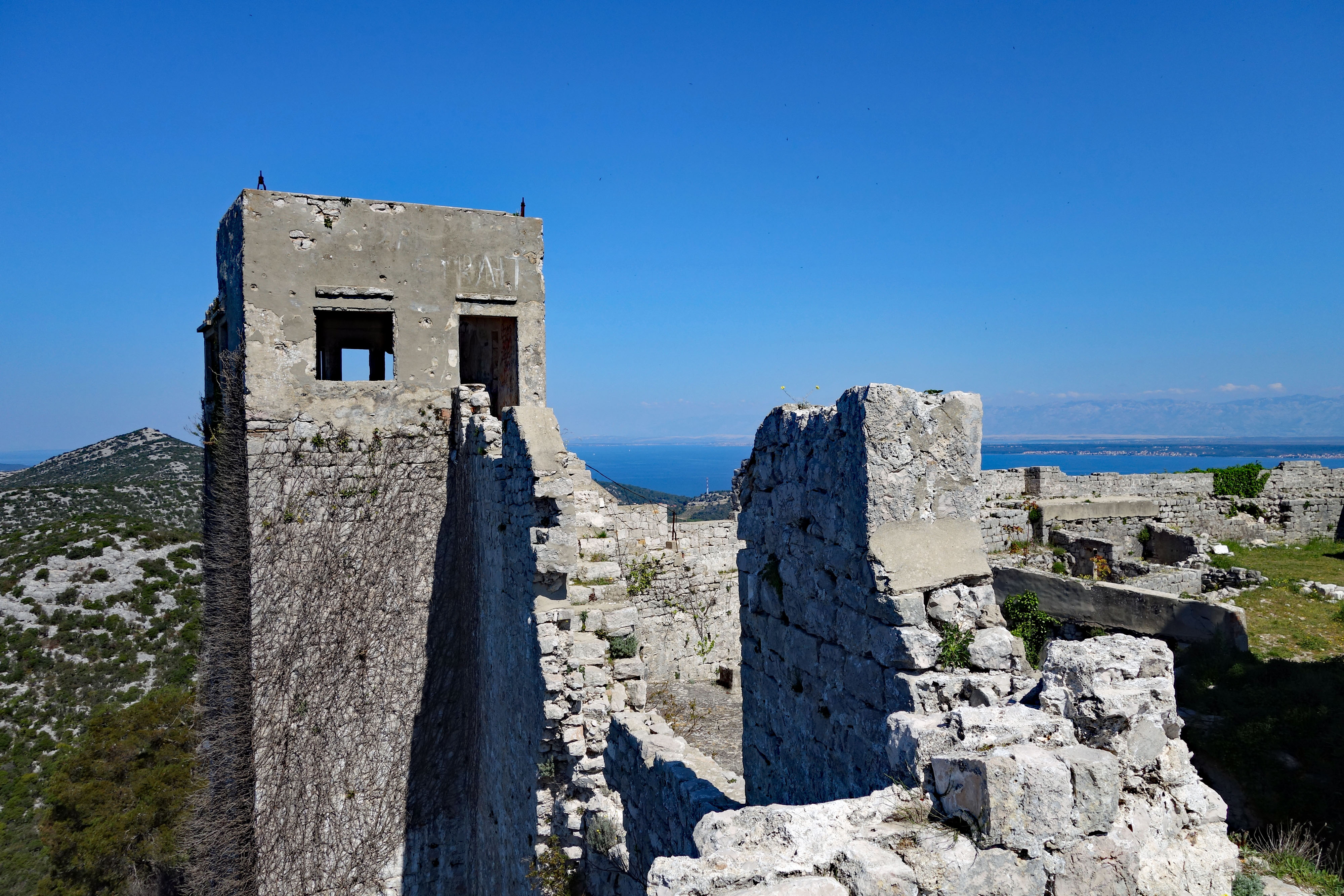
Today the fortress is still in bad shape with warning signs regarding the safety of climbing the walls, but climb around we did to enjoy sweeping views of much of the island, Zadar to the east, and dozens of Adriatic islands to the west.
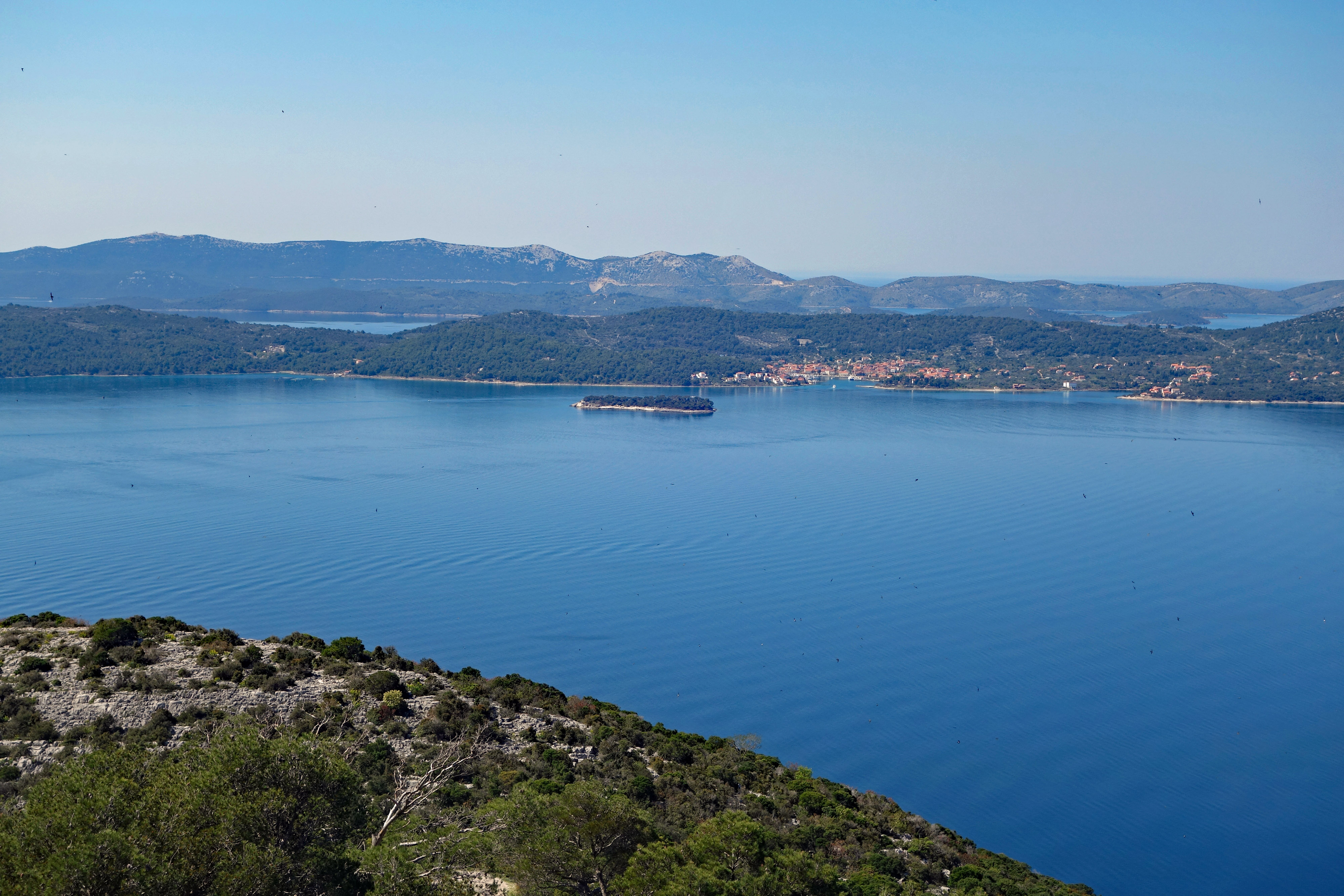
Zadar was our final stop in Croatia, and after 2 rainy days in the beginning, rewarded us with sunshine and clear blue skies for the rest of our stay. The city is a size that we like, approx 80,000 residents, on the sea, close to the mountains and with many amenities. There are less tourism sites nearby to visit, compared to further south, making the pace here more relaxed…or maybe it’s just April 🙂 Overall, we have thoroughly enjoyed Croatia and it is on our list of places to come back to, not only to explore Croatia in more depth, but to head over to neighboring Montenegro. I was disappointed that we did not plan a trip there after reading more about the areas near Dubrovnik…next time!
I have to make mention of something we noticed during our time in Croatia…they are very tall people!! Everywhere we went the locals towered over us, and yes I know I am a bit vertically challenged, but Blair felt this way too with many women standing taller than him. Has anyone else noticed this in Croatia?
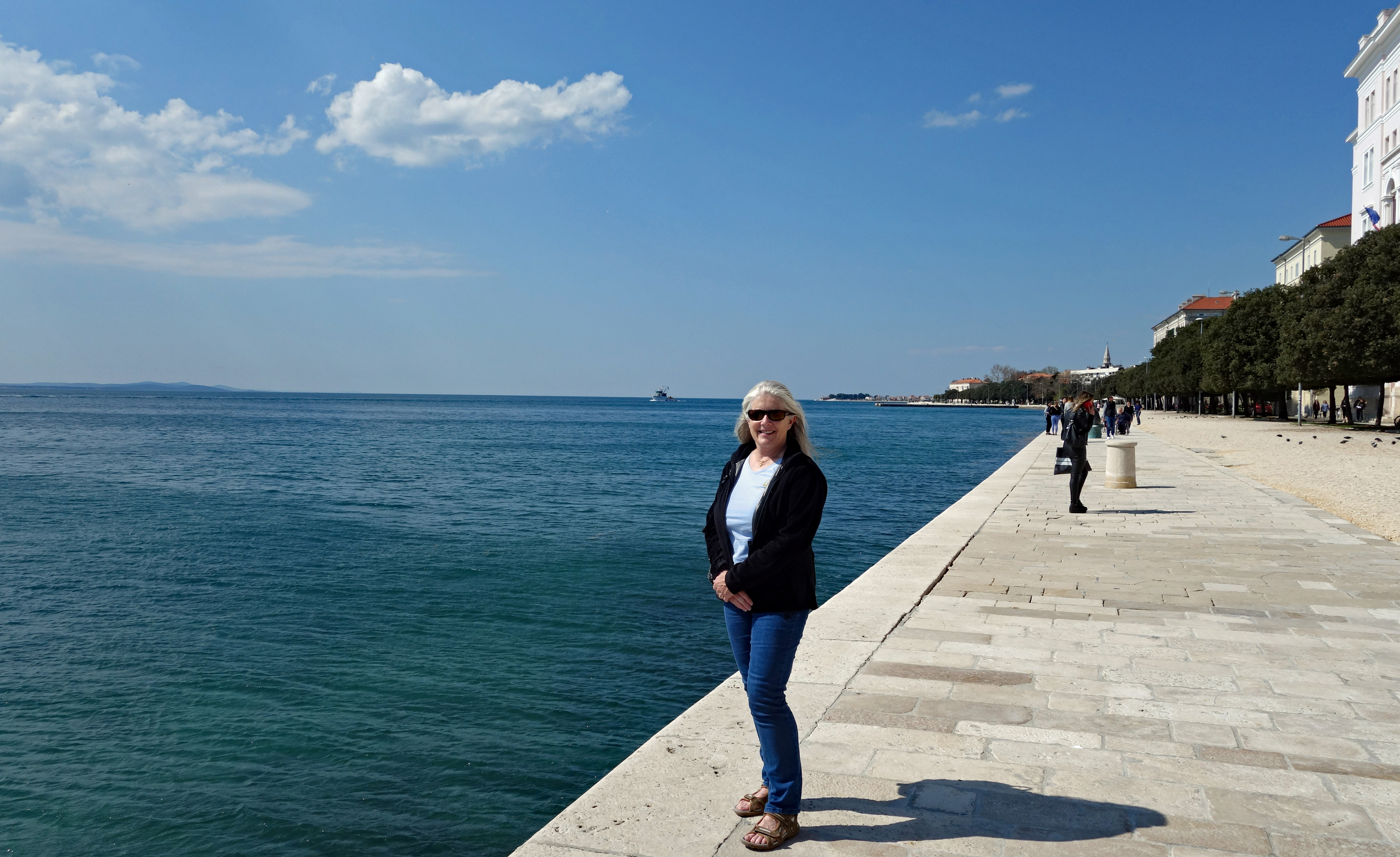
How did we find being without a car during our travels in Croatia? Getting around took a lot more time because buses do not take the most direct route, and we probably went fewer places than we would have if we had a car. Some locations were just not accessible by public transport, or extremely inconvenient to do so. If we are fortunate enough to return to Croatia we would most definitely hire a car and have the freedom to get away from the “popular” places. The money saved staying outside the favorite tourist destinations would help offset the cost of having a car, yet still allow us to day trip to the major sightseeing locations.
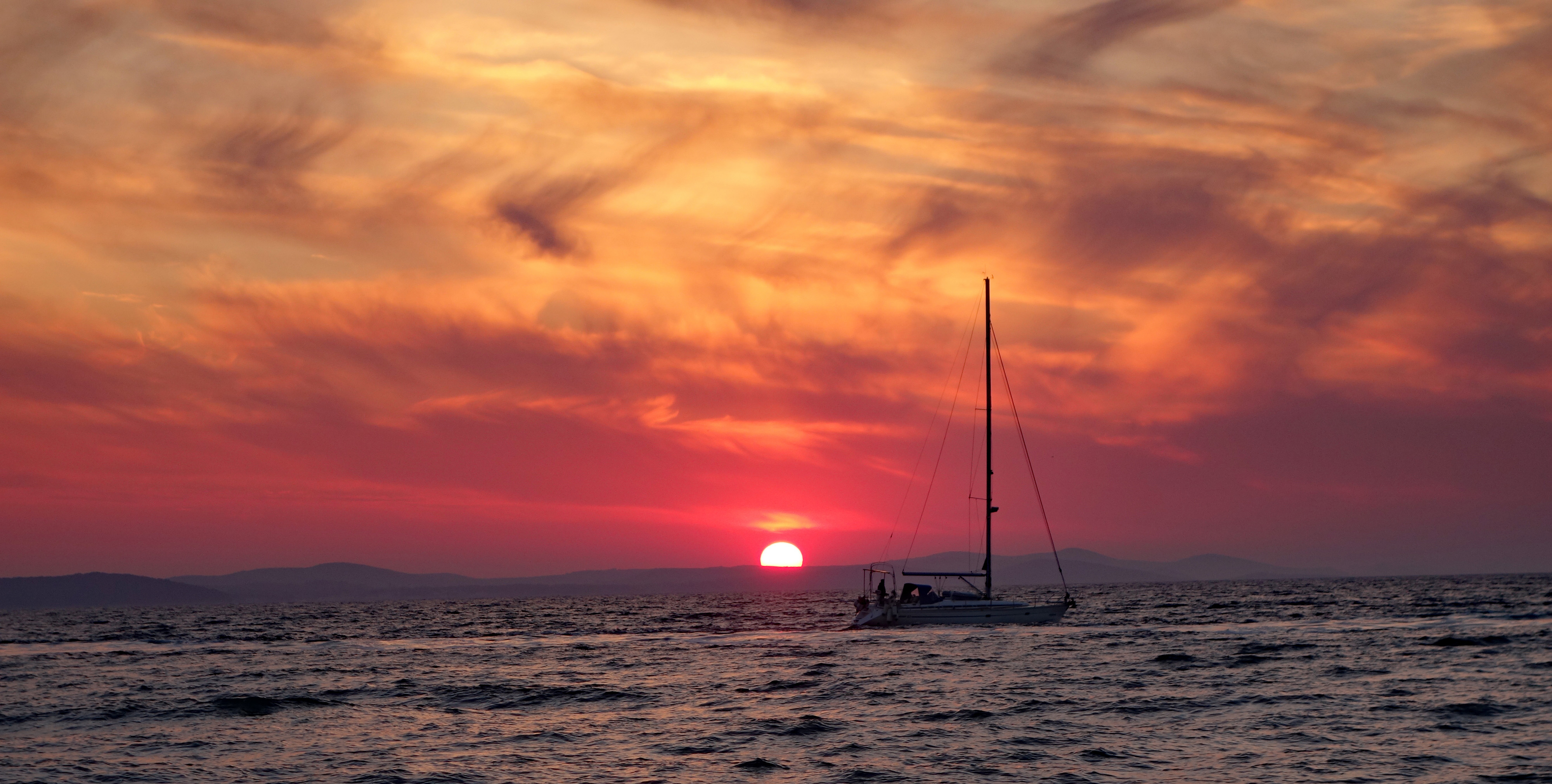
For now, our travels through Croatia have come to and end and we are off to Turkey. We booked our bus transportation from Zadar to Zagreb on FlixBus at a cost of 11.78 Euros each (13.40 USD), and it was a much better experience. The bus was clean and quite roomy between the rows of seats, we recommend this bus line if traveling in Europe. In Zagreb, we spent one night at a hotel near the airport prior to catching the Turkish Airlines flight direct to Istanbul.
While visiting Istanbul in December it was too cold to go to Cappadocia and do the famous balloon trip, so we revised our schedule (love having that flexibility) and planned a return visit before we leave this area of the world. Stay tuned for exciting flight news from our upcoming balloon ride…..
Trip Tips
We booked our historical walking tour of Zadar with Sime of Art&Nature Travel, click on this link for his website. He is the owner and guide, we highly recommend him.
Jadrolinija runs a passenger ferry from just outside old town across to Uglijan Island regularly, tickets cost 15 Kuna (2.30 USD) each way.
